* (restored/expanded)
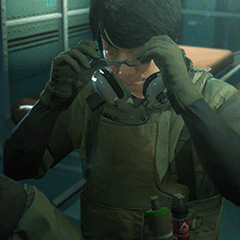
‘Really, it’s a miracle that the Metal Gear franchise exists at all. The original game was made for a system that few people outside Japan owned, and released by a company that had little faith in it. Yet 28 years later, Metal Gear’s huge: a multi-system, multi-media best-seller that is now one of the most important properties in Konami’s line-up. But back in the late 80s, Metal Gear’s pioneering ideas were widely frowned on in the Japanese developer’s offices.
‘Metal Gear designer Hideo Kojima cut an awkward figure when he began working at Konami in 1986. He’d studied economics at university, and had only become interested in videogames when he picked up Super Mario Bros a few months earlier; Super Mario was, he later said, “The game of my destiny.” Unable to program, Kojima was first hired as a planner, but his lack of technical skill often left him ostracised by his colleagues.
‘Kojima’s career was almost over before it started: his first game as planner, Lost Warld (yes, that is the correct spelling) was cancelled when it was found to be too complex to run on its host machine, the MSX. With one strike already against his name, Kojima was handed a new task: make a military combat game.
‘One year before, Konami had scored an arcade hit with the military action game Green Beret (known in some territories as Rush N’ Attack), and Kojima’s superiors probably expected him to make something similar: a game with plenty of pace, guns and explosions. Instead, Kojima came up with an altogether new and untested concept: what if, rather than wade into an overwhelming force head-on, you tried to sneak around it? Kojima’s bosses, it’s safe to say, weren’t especially taken with this idea.
‘”If I were to work on a game based on war,” Kojima later recalled, “I wanted to do something more like The Great Escape, where you actually run away rather than just shoot. When I came up with my game plan, my superiors said, ‘This rookie’s already failed on one project, and now he’s trying to come up with this weird concept where you don’t fight, but you run away.'”
‘In retrospect, it’s a miracle that Kojima was allowed to continue with Metal Gear at all. In fact, a collection of old design documents, dusted off by Kojima, photographed and uploaded to his Twitter feed, give a hint at the behind-the-scenes battle to get Metal Gear made. One document, carrying the early working title Metal Gear (Intruder), has a huge, official-looking red stamp across it: “Rejected”, it reads.
‘Nevertheless, Kojima clearly persevered. What emerged was a game that not only made the best possible use of the MSX2’s limited hardware, but also spawned a whole new genre: the stealth game.
‘Metal Gear introduces Solid Snake, a soldier whose mission is to infitrate an enemy stronghold and destroy the titular weapon: a towering, walking tank capable of firing nuclear missiles.
‘Looking back, it’s fascinating to see how many of the ideas which would become famous in later games – not least the equally seminal Metal Gear Solid – exist here in 8-bit form. Kojima’s now-famous love for cinema is evident even in this early incarnation, with its top-down perspective and tiny grey sprites.
‘Unlike most games of the time, which were decidedly one-note, Metal Gear’s gameplay has real light and shade, shifting effortlessly between stealth and action set-pieces. You enter the stronghold with no weapons of any kind, and Snake is hopelessly vulnerable to attack: if you cross a guard’s line of sight, chances are you’ll be gunned down within seconds. Metal Gear sees you criss-crossing the map in search of rations, key-cards and other items, all the while skilfully evading enemy soldiers and security systems. But gradually, increasingy powerful weapons are thrown into the mix, including a grenade launcher and an exceedingly satisfying Uzi, and the cat-and-mouse moments of occasionally punctuated by the occasional boss battle.
‘The game’s cinematic nature is underlined by its roster of non-player characters – including Gray Fox, who makes his franchise debut here – and abrupt turns of fortune, like the scene where you’re captured and lose everything you’ve collected. These are all trappings we take for granted in action games now, but were strikingly new back in 1987. Kojima’s fouth-wall-destroying sense of mischief makes an early showing here as well: at one point, your commander Big Boss will suddenly tell you to turn off your computer – a plot point that Kojima would later introduce in Metal Gear Solid 2. This all builds to a superb final-act twist, which even 28 years later, is still too good to reveal here.
‘Shortly after Metal Gear launched in Japan, the game began to proliferate elsewhere – though frustratingly, few got to play it as Kojima originally intended. A localised version of the game, translated for the small MSX2 market in Europe, was evidently rushed, with dreadful spelling and a severely cut-down script which left almost half of its radio conversations out altogether.
‘The first version of Metal Gear to hit the US wasn’t even overseen by Kojima. The NES incarnation, released later in 1987, is considerably different from the MSX2 original, with retooled graphics, increased difficulty – and, weirdly, no appearance from Metal Gear itself. It later emerged that Konami’s management had handed off development of the NES version to an entirely different design team, who were given just three months to prepare it for release. Kojima has been openly critical of the NES port and its sequel, Snake’s Revenge, designed to capitalise on that game’s western success.
‘All this meant that, for many years, few gamers – particularly in America – would have played or even heard of Snake’s debut on the MSX2. Fortunately, the franchise’s later success meant that the original Metal Gear was never quite forgotten – a faithful port of the MSX version (with a decent translation this time) appeared as a bonus on Metal Gear Solid 3: Subsistence (and, by extension, the Metal Gear Solid HD Collection disc).
‘But even now, the MSX2 incarnation is seldom discussed as much as Metal Gear Solid, the 1998 PlayStation game which made Hideo Kojima internationally famous, and really brought the stealth genre to the masses. Yet Metal Gear remains a great game, even after all these years; where so many early series entries are interesting purely from a historical point of view – few gamers would want to spend more than a few minutes in the company of the original Street Fighter, for example – Metal Gear is a superb action game in its own right.
‘With the series now known as much for its cinematics as its gameplay, there’s something refreshing about Metal Gear. Made at a time when computers were incapable of dazzling our eyes with Hollywood-style cut-scenes, Kojima’s 1987 debut presents his design ideas in their purest form.’ –– Den of Geek
___
Stills
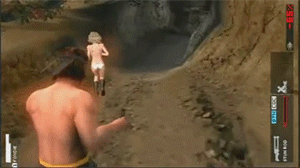
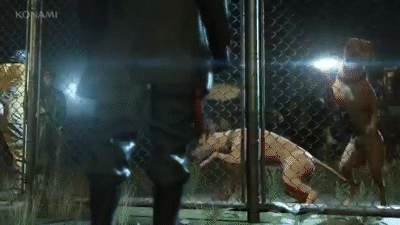
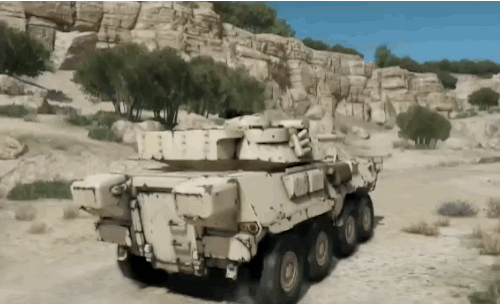
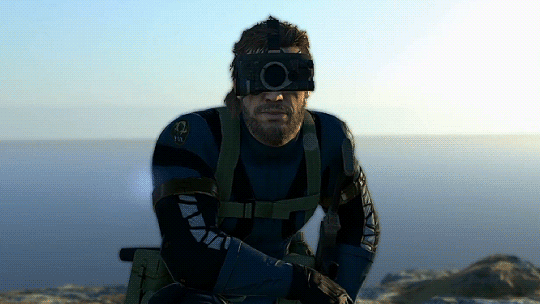
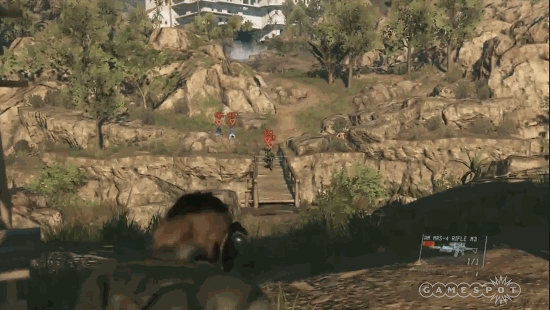
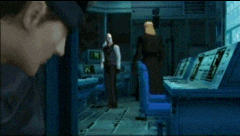
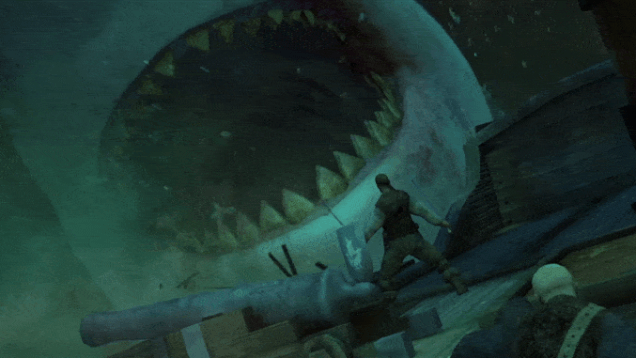

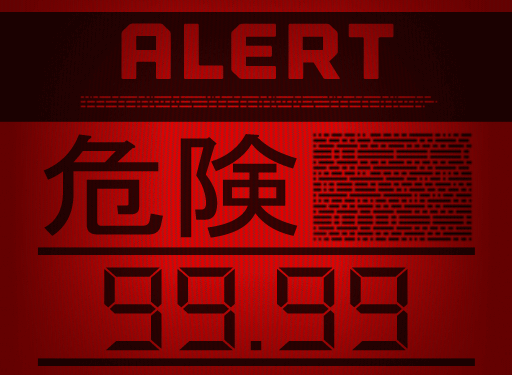
![]()
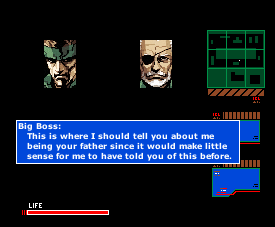
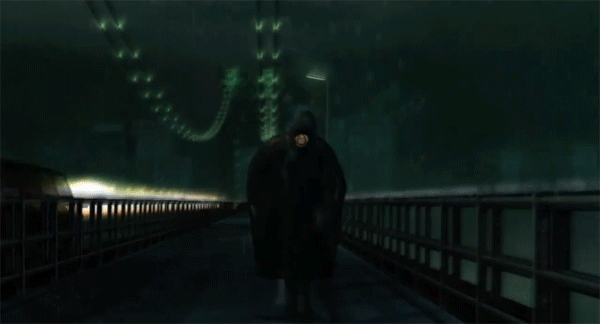
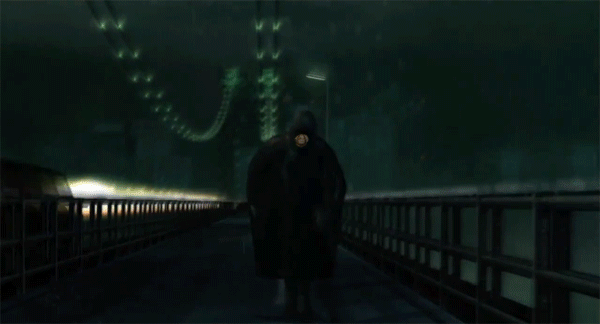
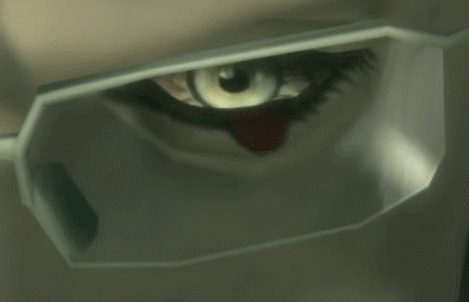
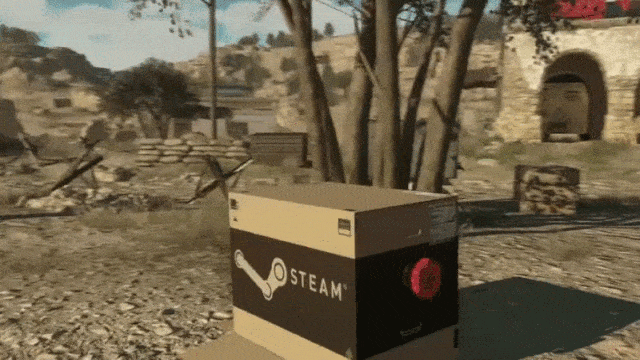
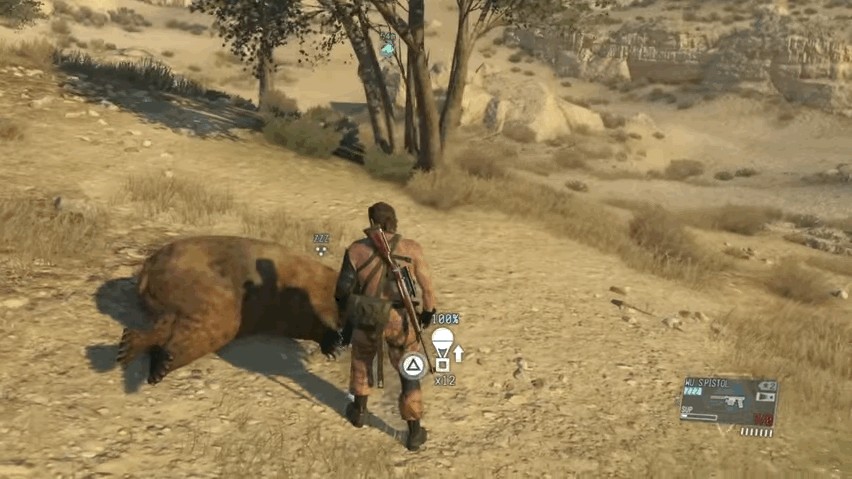

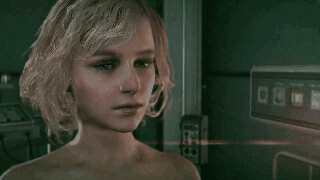

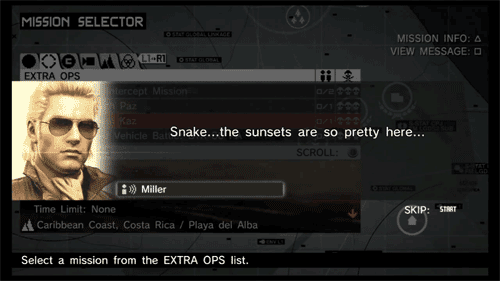




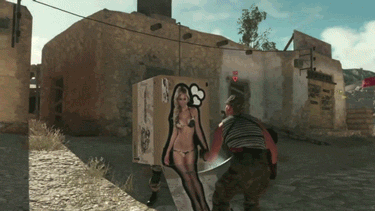
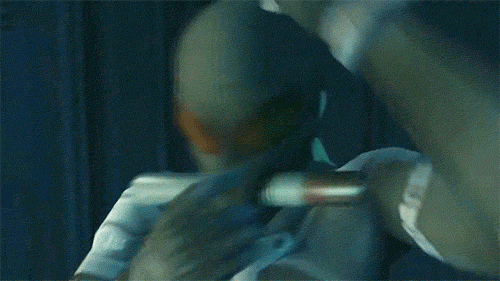
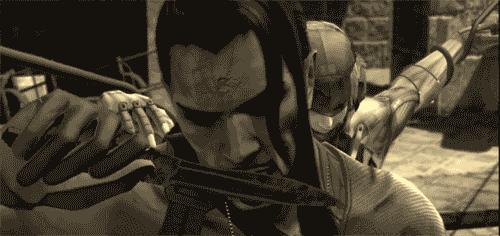
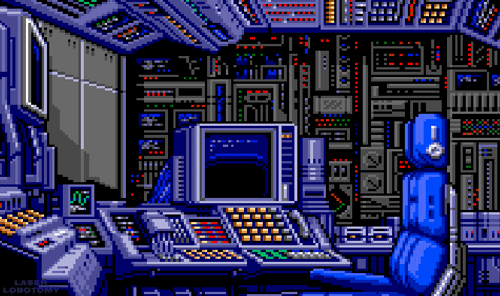

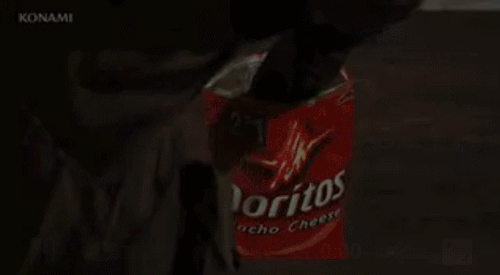
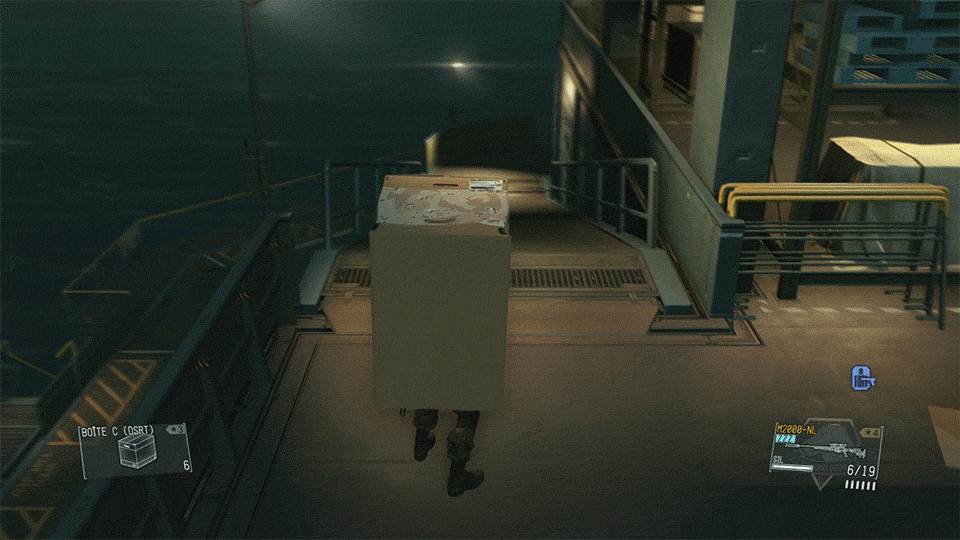
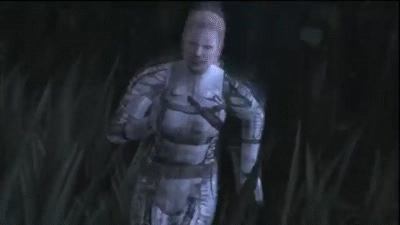
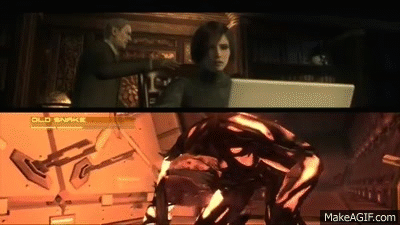
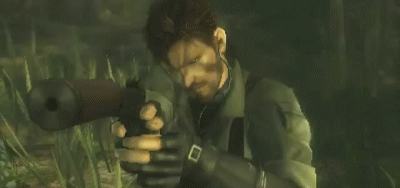
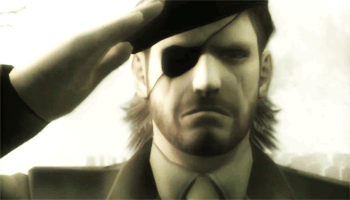
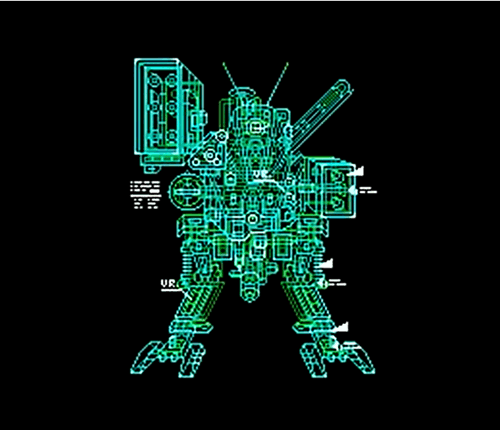

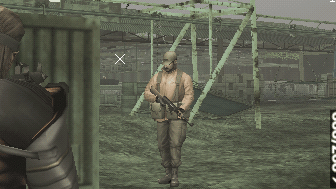
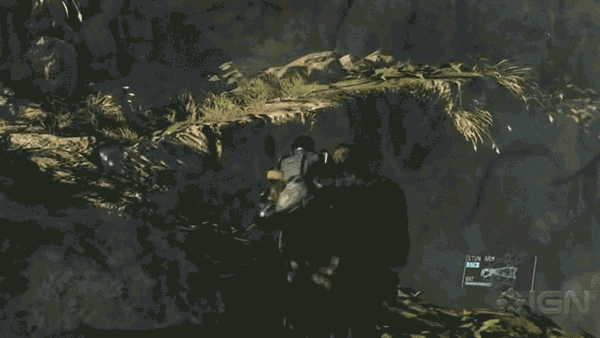
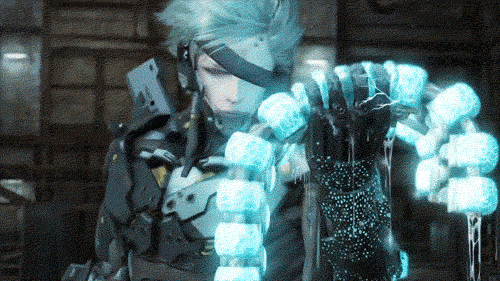

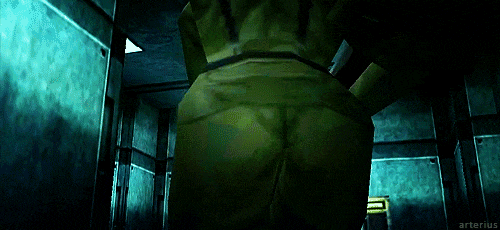
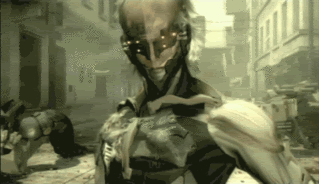
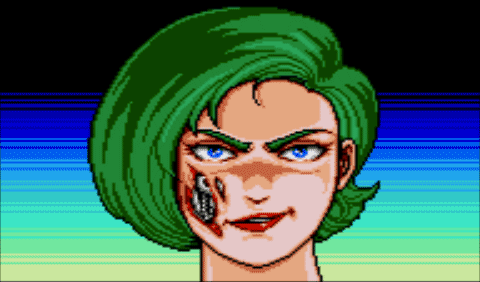
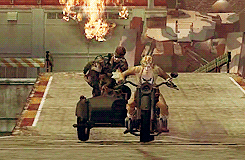
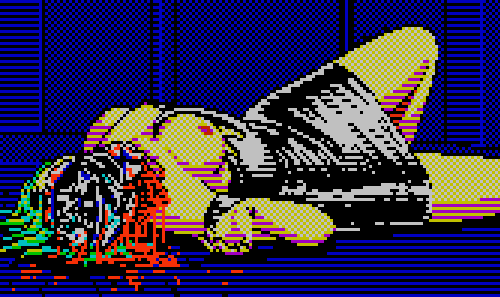
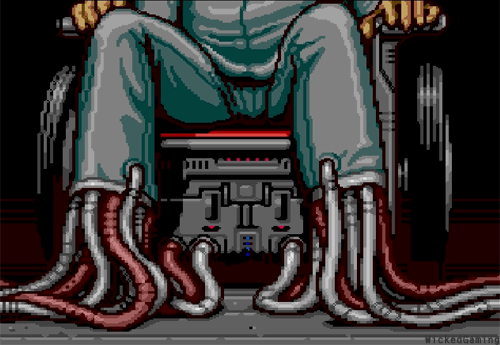
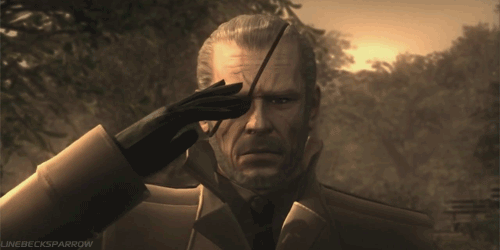
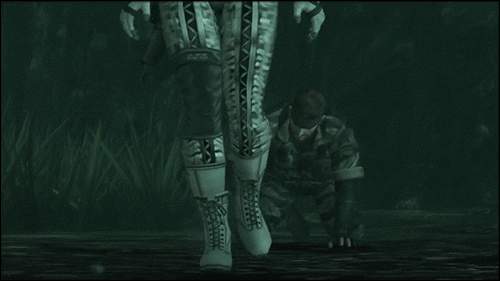
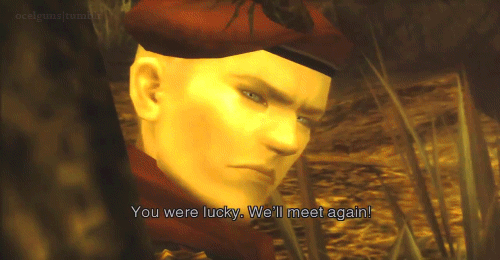

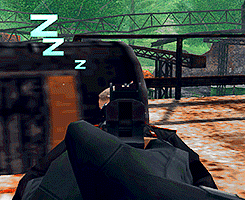

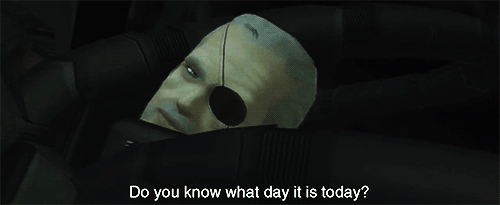
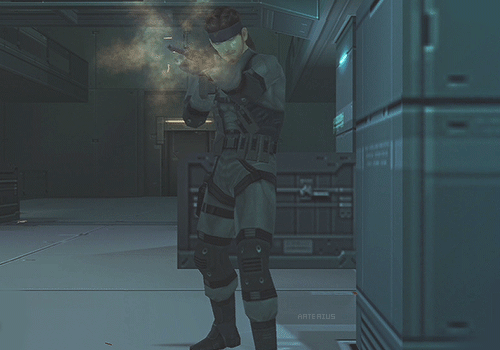
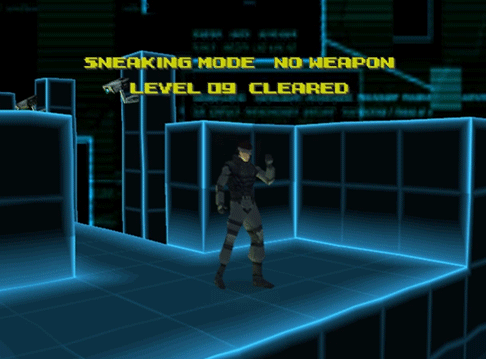

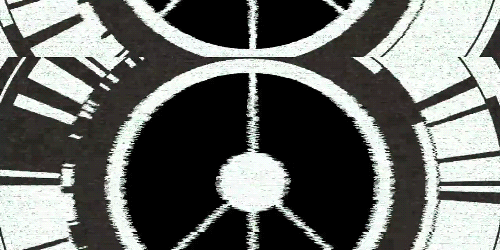

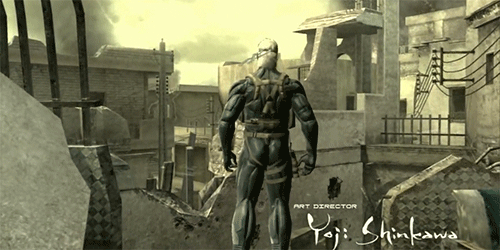

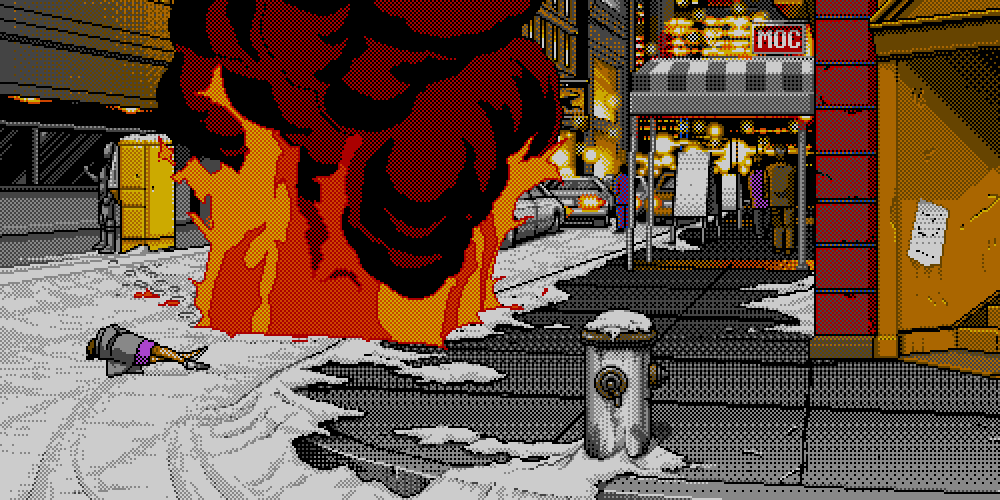
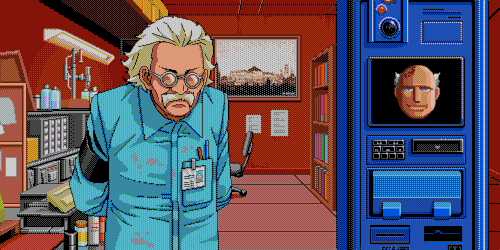

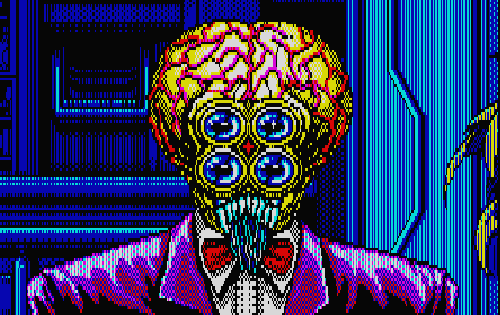
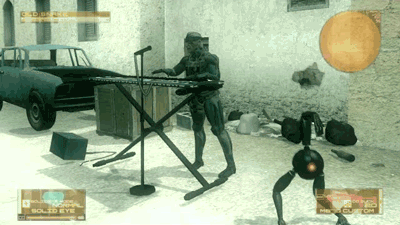
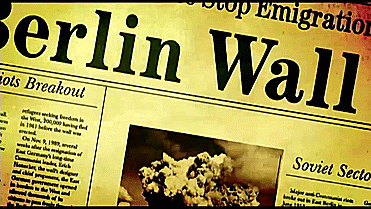
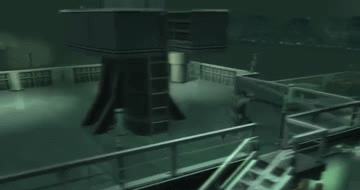


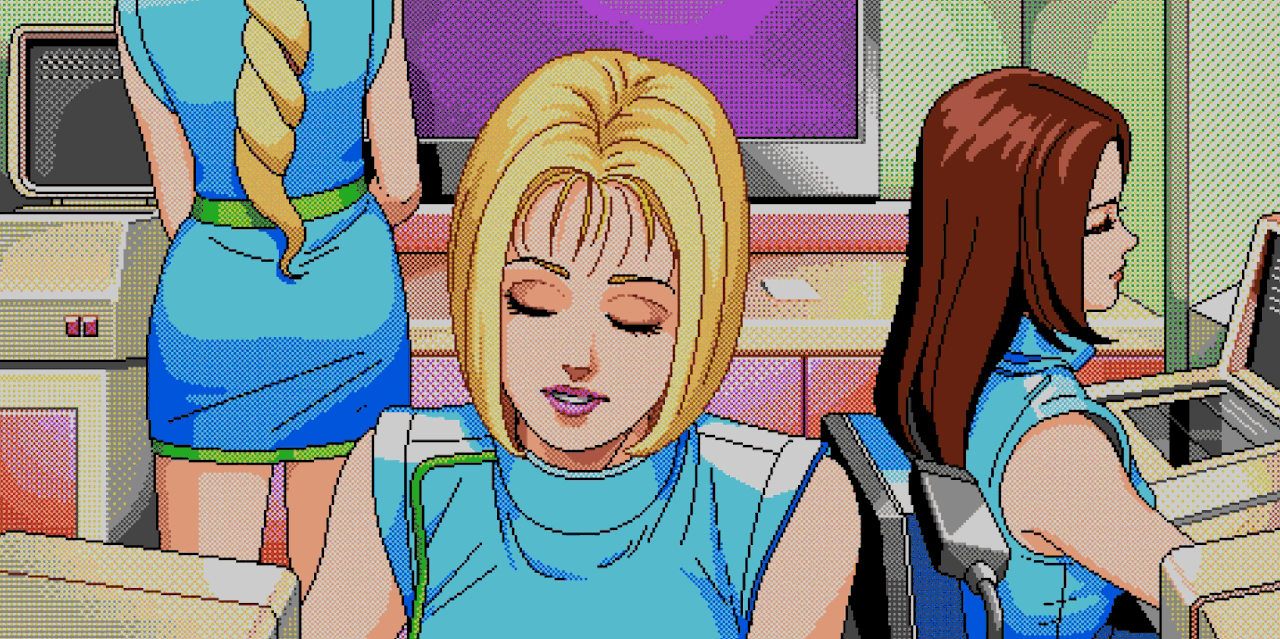

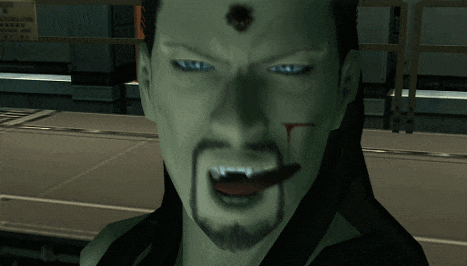
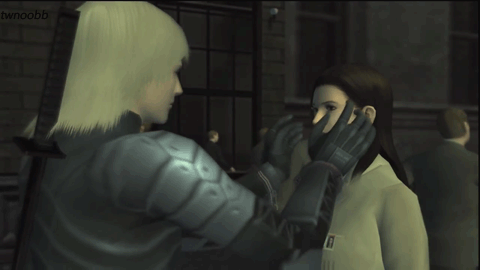
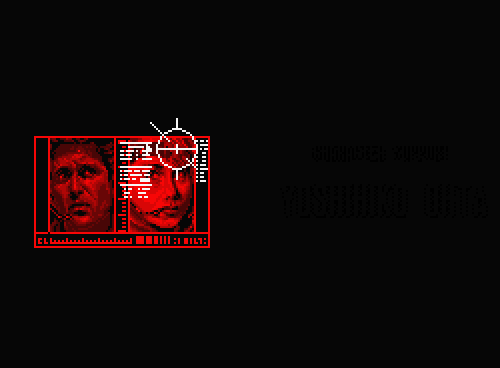

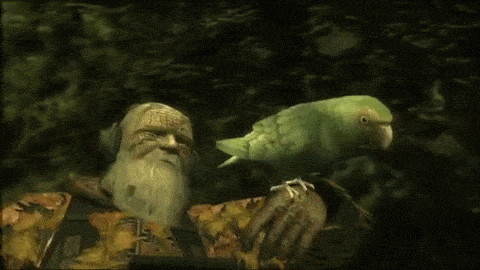
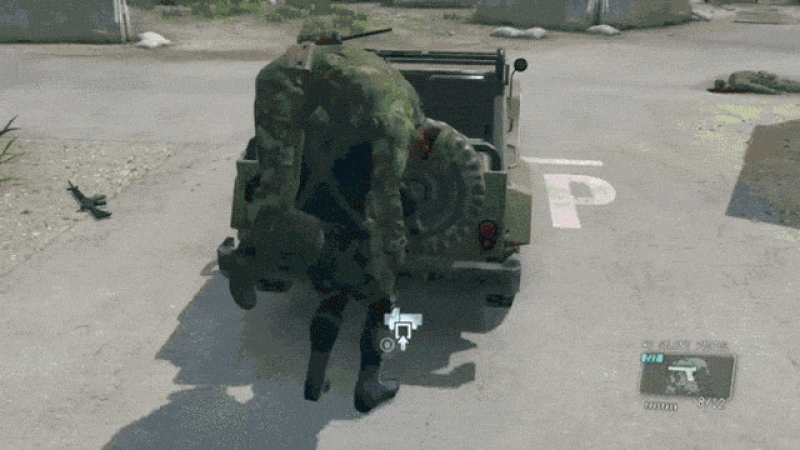
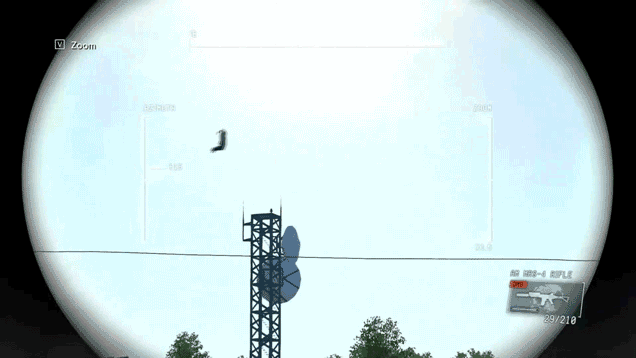

___
Further
Hideo Kojima @ Twitter
Hideo Kojima page @ Kotaku
‘Did Hideo Kojima Include An Epic Middle Finger To Konami In Ground Zeroes?’
‘Hideo Kojima Says It’s “Way Too Early” to Talk About New Game’
‘Why Did Hideo Kojima Leave Konagi?’
‘My Favorite Films’, by Hideo Kojima
‘Legends on the Future: Hideo Kojima’
‘Is Hideo Kojima imprisoned?’
‘Japan’s video game visionary: the console is dying’
Video: ‘BAFTA Interview with Hideo Kojima’
‘Should Hideo Kojima Just Go Make a Movie, Already?’
‘Hideo Kojima’s next game will be a ‘new evolution”
’10 of the Most Delicious-Looking Meals Tweeted By Hideo Kojima’
____
Extras
G4 Icons – Hideo Kojima (part 1 of 3)
Hideo Kojima Talks New Studio, ‘Edgy’ PlayStation Game, and the Future
Fans Boo Konami for Banning Hideo Kojima from The Game Awards – The Game Awards 2015
D.I.C.E. Summit 2016 – Hideo Kojima, Guillermo del Toro & Geoff Keighley
Metal Gear Saga Vol 1 & Vol 2 Full Documentary
____
Interview
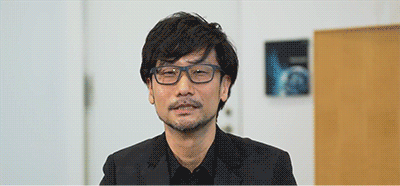
GameSpot: Congratulations on getting out and starting your new company. It’s been about two months since the new Kojima Productions studio was announced. What kind of progress has been made since the day of the announcement, in terms of hiring and getting off the ground?
Kojima: In theory–and ideally–you put together some staff, you look for facilities, and then you start working on a project, planning and testing, but…I’m doing all of this in parallel. Many people say, “Your games are great but they take a while to come out,” so I’m trying to change that.
How do you decide what to work on first? You have the world in front of you: how do you choose the right project?
Originally, after working for 30 years in one company, I was thinking of taking a one-year hiatus. But if I don’t keep creating, I will definitely get rusty. So I was thinking of making not a blockbuster, but something more edgy, maybe a small movie. That was my original thought process.
However, after talking with several friends and fans, a lot of people told me, “Everyone is expecting a lot from your next project, and it has to be a big one. Something that goes over a game that earned perfect scores; something that goes beyond that. Don’t get derailed.”
So I gathered my thoughts and considered the situation, and I decided that I would work on an edgy project. There are many things that I want to do, but I didn’t have to think too much about which one I wanted to work on; it kind of came naturally, what I’m working on now.
How are you dealing with the pressure that comes with the responsibility of running your own studio?
I have to be honest, for this project I’m working on, there’s are a lot of people, staff members, and fans who have high expectations. I have the feeling that I can’t fail. I can’t disappoint. I can’t go out there and do something too, too extreme, so there’s a little bit of that which I have to deal with.
Especially, because it’s our first game and we’re working with Sony, I want to make sure that it’s a great game for Sony, so there is pressure in that. However, I’m not even thinking of letting any of that to change anything that’s in the game.
Sony seems like a good fit for you. Is that because they’ve given you total freedom? Is Sony controlling any aspect of what your first project will be?
They are not controlling what I’m doing at all; that was part of the conditions, and Sony was very respectful towards me and what I do. In that regard, it’s been very nice, and very pleasant.
When you think about your success, does it surprise you? Did you imagine that you would get to this point when you started making games?
The first Metal Gear Solid title was surprising because I just made what I wanted to play, and I didn’t expect it to perform that well, and it actually didn’t need to perform that well, so that success was a surprise.
Metal Gear Solid was a surprise, and with Metal Gear Solid 2, there was a need to expand and build a market, so I had to keep that in mind. One thing that I never want to do is to change anything so that a game can to sell more copies.
If you could go back 30 years and give yourself one piece of advice, what would that be?
I guess it would be: “Believe in yourself.” Even now, and with the previous franchises that I worked on, whenever you try to do something really new, it’s hard to people to understand. The closer they are–and especially the people that are really close to you–they are opposed to doing something completely new. When you try to create something that doesn’t exist it’s difficult to communicate and convey that message to staff. There are always people telling me that I have to do things a certain way, but the only way to do what I want is to believe in myself.
Another piece of advice I would give myself…given that I didn’t expect Metal Gear to be so successful: I would tell myself to make something that wouldn’t be successful. It would have made things a lot easier. I don’t mean to brag with what I’m about to say, but I’m always making adjustments and playing the games I make, and I think to myself, “This is too fun, this is going to make other jobs harder. I need to make it a little more boring, because it’s just too good.”
Are you cautious about making another game that could turn into a series?
For this, with Sony, we are working on a project that will be a new IP, of course, and I have no idea if it’s going to be a series or not, but I want to make something that will have a big enough impact to become a series. By impact, I mean from the things that are unique to the game, the characters, and the world. This impact can lead into something outside of games, such as anime, manga, figures; something that is rich enough to expand.
Are you more interested in making a game with a really strong narrative, or really strong gameplay?
Both, because people expect both from me. I want to do something that gives a lot of freedom and interactivity. Like I did in the past, I want to make something that has a very strong, dramatic story. That’s what people want from me and that’s what I want to do. It would be so much easier if I could give priority to one or the other, but people expect both from me. At this point, it would be easier to make a linear game, but that’s not…
It’s risky, because we’re just starting up, so it probably would be better to go with something smaller-scale, maybe linear, but Sony is supporting us to make a big game that’s edgy with a strong story that gives the player a lot of freedom, with new elements, and I don’t know if that’s possible. But we’ll see.
Will your next project be a collaboration with another creator?
At this point, fans are expecting a game that’s mine, with 80-90 percent of my blood in it, so I would like to make collaborations, but that would lower the density of my identity in this game. Collaborations should be for other projects.
People make a lot of assumptions about you; what’s the biggest misconception?
A lot of people say that I spent too much money or take too much time, but that’s a misconception. My last project was late about five or six months, but I’ve always kept my word on timelines and budget. For example, I do take three to four years to make games, but that’s the plan from the start.
I take a lot of time because I create my own teasers, posters, and I work on how to create the box for sales. Japanese creators are famous for being loose with schedules, and I think people put me in that category, but it’s not reality. In my case, I’m a director and a producer, so I have to stay aware of production and the budget.
Lastly, how is your beard working out?
I’m not used to it, so I think about shaving it every day. In becoming an independent and creating my own studio, I wanted to change something about my look. I’ve received a lot of positive comments from people outside Japan about my beard, but inside Japan, beards have a bad image. People think, “You look old, you look tired.” My kids definitely don’t like it.
Thank you for taking the time to chat with us today, and congratulations on your upcoming award.
Thank you. I’m really glad I can now have a decent, normal interview. It just feels so good.
_________________
Death Stranding (2019)
‘In the future, a mysterious event known as the Death Stranding has opened a doorway between the living and the dead, leading to grotesque creatures from the afterlife roaming the fallen world marred by a desolate society. As Sam Bridges, your mission is to deliver hope to humanity by connecting the last survivors of a decimated America. Can you reunite the shattered world, one step at a time?’ — 505 Games
Trailer
23 Minutes of Death Stranding PC Gameplay
Walkthrough Gameplay Part 1
_________________
Metal Gear Solid V: The Phantom Pain (2015)
‘The holy grail of world-building games, it’s argued, is a black box that lets players do as they like with minimal handholding. Pliability with just the right measure of accountability. Metal Gear Solid V: The Phantom Pain, a tactical stealth simulation wrapped in a colossal resource management puzzle inside a love letter to theatrical inscrutability, comes the closest of any game I’ve yet played to realizing that ideal. We know by now that Kojima games mean wrestling with paradox. Thematic gravitas versus silly dialogue. Visual revelation versus graphical compromise. Gameplay versus cutscene. Eroticization versus objectification. Antiwar allegory versus lurid violence. When I asked Kojima what hadn’t changed about gaming over the past several decades, he told me that while the technology had evolved, “the content of the game, what is really the essence of the game, hasn’t moved much beyond Space Invaders.” It’s the same old thing, he said, “that the bad guy comes and without further ado the player has to defeat him. The content hasn’t changed—it’s kind of a void.” Loping across The Phantom Pain‘s hardscrabble Afghani-scapes, lighting on soldiers bantering about communism and capitalism, playing tapes of cohorts waxing philosophic about Salt II, Soviet scorched earth policies and African civil wars, questioning who I’m supposed to be—sporting metaphorical horn and tail, both hero and villain—all I know is that I’m going to miss the defiance, the daring, the controversy, the contradictions. This, given Kojima’s rumored breach with Konami and his own affirmations about leaving the series, is all but surely his last Metal Gear game, so it’s poetically fitting that it turned out to be his best.’ — Time
E3 2015 GAME PLAY DEMO | METAL GEAR SOLID V: THE PHANTOM PAIN
Metal Gear Solid 5 The Phantom Pain Walkthrough Part 1 – First 3.5 hours!
Metal Gear Solid V: The Phantom Pain – E3 2013 vs Gamescom 2014 – Graphics Comparison
______________
Metal Gear Solid V: Ground Zeroes (2014)
‘The story sequences in Ground Zeroes captivate with impressive cinematography, properly showcasing the exploits of the brutal yet heroic Big Boss; a battlefield prodigy who long ago disavowed his allegiance to the US Government and established his own military for hire. Metal Gear has always been recognized for having impressive cutscenes, but they’re usually hindered by inconsistent animation and over-the-top voice acting. Thankfully, the opposite is true in Ground Zeroes. Characters move and speak with a natural grace, and even though it’s jarring to hear the recognizable Kiefer Sutherland voice Big Boss in place of fan-favorite David Hayter, his delivery is far more realistic and believable. No matter the platform you play it on, you’re treated to impressive lighting and masterfully crafted character and environment models that, along with the renewed cast, elevate Ground Zeroes’ cutscenes above and beyond those from the past. They may not stick around for long, but they certainly leave a lasting impression. This dichotomy between stealth- and action-oriented gameplay lends itself to fear, tension, and excitement. One moment you can hear a pin drop, and the next, you’re bolting across a chaotic military base with bullets whizzing by your head and desperation clouding your focus. If this were a more linear experience, perhaps the allure of this contrast would wear thin, but there are so many ways to tackle individual missions, be it the path you take or the weaponry you choose, that there’s almost never a shortage of new tactics to explore. When your only playground is a military base, it’s easy to find new ways to entertain yourself in Ground Zeroes.’ — Gamespot
Trailer
Metal Gear Solid V: Ground Zeroes THE MOVIE – Full Story
Ending
______________
Metal Gear Solid: Peace Walker (2010)
‘Gameplay wise, the ‘Metal Gear Solid’ games are not the best option for the impatient. The objectives are based around stealth as it is the main focus of the gameplay, and even though you can head in like gangbusters and shoot everyone down, MGS frowns on that approach. What that basically means, is that you will be doing a lot of hide-and-seeking as you watch your sonar screen to progress. However, this formula isn’t airtight, and Peace Walker is more glitchy and restrictive compared to something like MGS4: Guns of the Patriots. Even with warnings like “careful snake, this is a stealth mission” I still gunned down everyone that moved running to the next fading load screen without penalty. Playing against the grain can host some interesting results, and highlight the occasional bug. Turning into Rambo won’t get you very far, but you might just be able to pass some levels you didn’t think where possible without turning into a chameleon. Of course Boss Battles are different, and aside from them Peace Walker encourages you to keep your actions on the down low. Snake has several gadgets available at his disposal to trick and take advantage of your adversaries. Believe it or not, this includes an “adult” magazine. Playing the way Kojima wants you will earn you more experience points and benefit your game in the long run. Got the Creepy Crawlers I’m not sure why I found Peace Walker to be so buggy, but I kept having unpredictable experiences during all hoopla. In once instance I was actually playing the game properly, sneaking around and using my stun baton when a guard spotted me crouched down in a corner not moving. He then yelled for help saying “he was being shot at” when I didn’t even move from my crouched position, or have a gun equipped in my hand. This is a little alarming when the game is made up of 50% cut-scenes and 50% in-game action. buggy? broken? or unpredictable? MGS: Peace Walker might be more frustrating then intended. Keep in mind, these “occasional” bugs don’t ruin the game and are more forehead crunching then anything.’ — Extreme Gamer
Metal Gear Solid: Peace Walker – The Movie [HD] Full Story
Metal Gear Solid: Peace Walker – Gameplay Walkthrough Part 15
Metal Gear Solid Peace Walker – Easter Egg Part 3
_______________
Metal Gear Solid 2: Digital Graphic Novel (2008)
‘Metal Gear Solid creator Hideo Kojima has taken to Twitter to add some insight into why he decided to include two graphic novels by artist Ashley Wood in the upcoming Metal Gear Solid Legacy Collection. The first two Metal Gear Solid have “got different control feeling” compared to modern games, says Kojima through a translator. The graphic novels are meant as more of a “watch MGS” mode for those raised on modern control schemes. With more remakes and longer series lately, it’s not uncommon to see developers help players get players caught up on a universe one way or another. Including a graphic novel for backstory is an interesting way to make up for gameplay differences over a series’ lifetime.’ — IGN
the entirety
_______________
Metal Gear Solid 4: Guns of the Patriots (2008)
‘Metal Gear Solid has always been a love it or hate it proposition. Millions love it for its involved, conspiratorial plotting, its arch sense of humour, its demanding stealth gameplay, its sprawling cinematic ambition, its preposterous stylishness and pretensions toward artistic weight. Millions hate it for exactly the same reasons. Then there are those – this reviewer included – for whom Metal Gear Solid is a love it and hate it proposition. Flawed, intractable, unspeakably tedious at times, and yet blessed with incredible production values, imaginative design, and a brilliant, brave willingness to think and do the unexpected and impossible. At times they’re barely videogames at all, but they’re capable of moments of pure videogame genius, joy and shock that few other series can match. So how do you review a new Metal Gear Solid? Do you assess it on its own terms, ones that its legion of fans will understand? Do you play the sceptic, and take Hideo Kojima and his team to task for their stubborn refusal to catch up with what the rest of the world expects of a videogame? Or do you walk the path of compromise, down the middle? Well, if there’s one thing Metal Gear Solid 4 isn’t, it’s compromising. Kojima has barred no holds in an extraordinary, kitchen-sink finale to the Solid Snake story. Plausibility is stretched to extremes as every character you can think of (and several you never would) makes a cameo appearance in this melancholy epic. Features that would be a tent-pole selling-point for other games are frittered away as Easter eggs and one-shot surprises. Such is the luxurious length and mind-numbing detail of the cut-scenes and codec conversations that you could put the pad down for almost half the game’s ample length. (One character actually asks you to do so at one point, resulting in a typically self-aware and genuinely hilarious joke.).’ — EuroGamer
Trailer
Metal Gear Solid 4: Guns of the Patriots (Big Boss Run)
Metal Gear Solid 4 – The Movie [HD] Full Story
_______________
Metal Gear Solid 3: Subsistence (2005)
‘Just why is Solid Snake called Solid Snake? Contrary to popular belief, series creator Hideo Kojima has said that the name didn’t actually come about from Escape from New York star Snake Plissken. Kojima wrote on Twitter to explain the code name Snake in the original Metal Gear. “The reason I used Snake as code name in MG was Snake was the most appropriate symbol of living thing that hides his presence and sneaks without any noise. The reason I didn’t make any specific snake like cobra, anaconda, viper was because the protagonist is the player,” Kojima explained. And what about Solid? “The reason I use Solid was to give opposite impression of soft image,” he said. Moving on to the other Snake characters in the series, Kojima first explained the thinking behind Solid Snake’s cloned brother Liquid Snake in 1998’s iconic Metal Gear Solid, created from the DNA of Big Boss–known in prequel title Metal Gear Solid 3: Snake Eater as Naked Snake. “Like of all endings of any series are, the appearance of strongest enemy was a must in MGS. It’s Snake who can surpass the Snake. Thus I brought about ‘clone’. Solid vs Liquid. That is MGS.” Kojima also went on to explain the naming behind Solidus Snake in 2001’s Metal Gear Solid 2: Sons of Liberty. “As to develop sequel, the 3rd snake was needed,” he said. “Since both Solid & Liquid express state, means same true state. Naturally the next would be gas, but gas snake is like gas human, not handsome name. So I borrowed from physics terms of “solidus/liquidus”. Solidus is not state but implies the boundary of liquid and solid.”‘ — Game Spot
Trailer
Metal Gear Solid 3: Subsistence / Snake Eater – Secret Theater
Metal Gear Solid 3: Subsistence PlayStation 2
_______________
Metal Gear Solid 3: Snake Eater (2004)
‘Snake is in for another richly cinematic, occasionally convoluted, and ultimately satisfying adventure in Metal Gear Solid 3: Snake Eater, the latest installment in Konami designer Hideo Kojima’s long-running stealth action series. Much like its predecessors, Metal Gear Solid 3 begs to be talked about, if nothing else. After all, during the course of the game, you’ll experience a story dense with detail and intrigue, one that’s often presented using some of the most dramatically staged video game cutscenes to date. You’ll also spend about half your time with the game just watching (or listening to) the story unfold, and for every sequence that’s extremely exciting and thought-provoking, there’s a part that seems needlessly drawn out. Meanwhile, the gameplay itself–despite an all-new setting in a Soviet jungle during the 1960s–really hasn’t changed much since the last installment, and it’s aged noticeably during these past few years. Consequently, the mechanics of Metal Gear Solid 3 can be just as confounding as the storyline–but also just as rewarding, especially once you reach some of the game’s memorable, dramatic confrontations. In short, this is a great game that embodies both the impressive style and the one-of-a-kind spirit of its predecessors.’ — Game Spot
Trailer
PS2 Longplay [001] Metal Gear Solid 3: Snake Eater (part 1)
Metal Gear Solid 3 – Operation: “Snake Eater” (All Cutscenes with Captions)
_____________
Metal Gear Solid: The Twin Snakes (2004)
‘Remake of the acclaimed PlayStation stealth-action action title Metal Gear Solid, developed under supervision of creator Hideo Kojima and legendary Nintendo game designer Shigeru Minamoto.’ — Emuparadise
Metal Gear Solid: The Twin Snakes (Gamecube) Full Playthrough
___________
Metal Gear Solid 2: Substance (2002)
‘The creator Hideo Kojima’s original design document for the game was completed in January 1999; it was later made publicly available several years later and then translated into English in 2006. It mentioned that the game was originally going to be called Metal Gear Solid III to symbolize Manhattan’s three tallest skyscrapers at the time and that Raiden was designed as “a character in which women can more easily empathize.” The document outlines new game mechanics and features, such as bodies that need to be hidden, enemies being able to detect shadows, lights in an area that can be destroyed to affect enemy vision, realistic enemy AI that relies on squad tactics rather than working individually, and multi-level environments that add an element of “vertical tension” to the stealth gameplay. It also outlines themes, such as passing on memories, environmental issues, and particularly social themes regarding the “digitization of the military,” digital simulations, the “digitization of operational planning,” the “digitization of everyday life,” and the “effects of digitization on personality.” The document stated that the “aim of the story” involves “a series of betrayals and sudden reversals, to the point where the player is unable to tell fact from fiction” (departing from the “very clear and understandable story” of its predecessor), that “every character lies to (betrays) someone once,” blurring the line between “what is real, and what is fantasy,” and “ironies aimed at the digital society and gaming culture.” The game’s production budget was $10 million. Kojima states that when he “heard about the hardware for the PlayStation 2,” he “wanted to try something new. Up to that point, all cutscenes had focused more on details like facial expressions, but I wanted to pay more attention to the surroundings, to see how much I could change them in real time.”‘ — Wiki
Trailer
PC Longplay Metal Gear Solid 2: Substance (part 1)
_____________
Metal Gear Solid 2: Sons of Liberty (2001)
‘Almost anyone who owns an original PlayStation knows the name Metal Gear Solid. Heralded as one of the best games ever released for the system, it was indeed an amazing experience, albeit a short one. As much as this game was hyped, it was also equally criticized by gamers and reviewers alike for its 3-5 hour average gameplay length. And while it was true you could blaze through this title in a single sitting, people who did missed out on much. The entire concept of Metal Gear Solid is more of a cinematic experience or interactive motion picture if you will. You become the hero of your own action movie and no one can argue that a 3-5 hour action movie is a pretty good deal. Metal Gear Solid 2: Sons of Liberty has been one of the most anticipated titles in the history of the PS2. People were talking about it while we waiting in line to get our systems; it video preview drew amazing crowds at the 2000 E3 show, and the combo-packaged demo made Zone of Enders one of the best selling (and least played) titles in PS2 history. Sons of Liberty builds upon its predecessor in both scope and length, but in the end it succumbs to its own grandiose vision and bogs the player down in seemingly endless movies, sacrificing gameplay for the narrative. I’m told by our Japanese cultural attache that the Japanese gaming public enjoy this style of game, but for the trigger happy domestic gamer, you will find yourself tapping your foot impatiently as com-link conversations and movies drone on and on.’ — Game Chronicles
Trailer
Metal Gear Solid 2 – The Movie [HD] Full Story
Metal Gear Solid 2: Sons Of Liberty Glitches
_____________
Metal Gear Solid VR Missions (1999)
‘Metal Gear Solid: the revolutionary game that invented its own genre. A game that redefined the way we imagine games and how we play them. As has been well documented, Metal Gear Solid is a game that focuses mainly on stealth. Stealth, as displayed by Solid Snake, is the greatest weapon you will have in the game. Haphazard gunfire and sloppy tactics will get you killed in this game. Period. If you want to make it out of this snowy hellhole in one piece, you’d better learn when to act and when to stay still, and you’d better learn quick. What, then, is the point of Metal Gear Solid: VR Missions? Unlike the Japanese version (which released under the name MGS: Integral), the domestic version is not just a slightly updated version of the original game. The Japanese version only added the tuxedo from the original American release, along with a useless first-person perspective that was more trouble than it was worth. For the US version, MGS: VR Missions is essentially an extra disc, which, among other things, adds 300 additional VR missions for the stealthy gamers out there to occupy themselves with. That’s right. At the risk of sounding like a used-car salesman, a staggering 300 VR missions awaits to test all of you who thought you were all that the first time around.’ — Game Spot
Trailer
[TAS] Metal Gear Solid: VR Missions “100%” in 2:10:12.43
______________
Metal Gear Solid: Integral (1999)
‘Metal Gear Solid: Integral is an expanded version of the original Metal Gear Solid first released for the PlayStation in the NTSC-J region in 1999 and later released for Windows in other regions in 2000. It includes most of the changes and additions that were made in the NTSC-U/C version of the original Metal Gear Solid (e.g. adjustable difficulty settings, English voice acting, and Solid Snake’s hidden tuxedo outfit), as well as new features and changes of its own, including a third disc consisting almost entirely of VR training missions dubbed the “VR Disc.”‘ — Metal Gear Wikia
PC Longplay [077] Metal Gear Solid Integral – Story Mode (Part 1)
Metal Gear Solid Integral – First Person View Mode Demo
Metal Gear Solid Integral – Mei Ling Talked About Memories
_______________
Metal Gear Solid (1998)
‘The development for Metal Gear Solid began in mid-1995 with the intention of creating the “best PlayStation game ever”. Developers aimed for accuracy and realism while making the game enjoyable and tense. In the early stages of development, the Huntington Beach SWAT team educated the creators with a demonstration of vehicles, weapons and explosives. Weapons expert Motosada Mori was also tapped as technical adviser in the research, which included visits to Fort Irwin and firing sessions at Stembridge Gun Rentals. Kojima stated that “if the player isn’t tricked into believing that the world is real, then there’s no point in making the game”. To fulfill this, adjustments were made to every detail, such as individually designed desks. Hideo Kojima created the characters of Metal Gear Solid. Modifications and mechanics were made by conceptual artist Yoji Shinkawa. According to Shinkawa, Solid Snake’s physique in this particular installment was based on Jean-Claude Van Damme, while his facial appearance was based on Christopher Walken. The characters were completed by polygonal artists using brush drawings and clay models by Shinkawa. Kojima wanted greater interaction with objects and the environment, such as allowing the player to hide bodies in a storage compartment. Additionally, he wanted “a full orchestra right next to the player”; a system which made modifications such as tempo and texture to the currently playing track, instead of switching to another pre-recorded track. Although these features could not be achieved, they were implemented in Metal Gear Solid 2: Sons of Liberty. Metal Gear Solid was shown to the public at E3 1997 as a short video. It was later playable for the first time at the Tokyo Game Show in 1998 and officially released the same year in Japan with an extensive promotional campaign. Television and magazine advertisements, in-store samples, and demo give-aways contributed to a total of $8 million in promotional costs. An estimated 12 million demos for the game were distributed during 1998.’ — Wiki
Trailer
Metal Gear Solid – Extreme (in 1 hour 31 minutes!)
Metal Gear Solid 1-Easter Eggs and Secrets
_______________
Policenauts (1994)
‘For the longest time, Policenauts was considered Hideo Kojima’s lost masterpiece. Although initially released in 1994 for the Japanese PC-9821 home computer, it was eventually ported to the 3DO, PlayStation and Saturn over the next few years. None of these were ever released outside of Japan. It wasn’t until 2009 that a group of determined fan translators at Policenauts.net hacked the PlayStation version and released an English language patch, to elation of thousands of fans around the world. Why all the hype? At the time of its release, Policenauts was advertised as “The Next Generation of Snatcher“. While Snatcher was released in English for the Sega CD, it gained a cult audience in America and Europe, although the sales were beyond dismal, mostly due to it being released at the tail end of the system’s life span. It wasn’t until 1998 that Kojima’s name entered the video gaming world with the release of Metal Gear Solid, which not only revived interest in the old 8-bit series, but renewed interest in Kojima’s other works. The price of Snatcher in the aftermarket shot up, and gamers everywhere wondered, just what the heck was that Policenauts thing?’ — Hardcore Gaming 101
Policenauts intro (English)
Policenauts (PlayStation) English Full Playthrough
______________
Metal Gear 2: Solid Snake (1990)
‘Metal Gear 2: Solid Snake has received near universal critical acclaim by retro game reviewers. According to Paul Soth of GameSpy, the game surpassed its predecessor Metal Gear in every way. In addition to praising the gameplay, he also praised the game’s “gripping, well written storyline” for its “rich characterization” and its “same quality of storytelling that made MGS so compelling.” He concluded that players will not be disappointed by “the great gameplay and story,” and that it remains “one of the best 8 bit games ever made.” Game Informer was more critical of the game, however, giving it a 7 out of 10. They wrote that in order to reach the most pivotal moments in the game’s story, “you must endure some of the most ridiculous situations Solid Snake has ever seen,” and that “the game’s focus on constant backtracking and keycard acquisition makes it too repetitive.” They concluded that “only diehard fans will find the experience rewarding” and that the best way to play the game is through the bonus disc of Metal Gear Solid 3: Subsistence.’ — Wiki
Intro
Metal Gear 2: Solid Snake (MSX/Xbox 360) Full Playthrough
Big Boss’s Final Battle
______________
Super Deform Snatcher (1990)
‘SD Snatcher was released exclusively in Japan in 1990. In the early 1990s, the game was translated into English by a Dutch group of fan translators called Oasis. Although the quality of this translation arguably was not so good, it enabled many people outside Japan to play this game as well. In 2011, a re-translation project was started known as Project Melancholia. The release of this new English translation was expected to be around early 2012. On 2 January 2014 the project was released. This translation is not distributed freely though – the group requires monetary compensation for their patch.’ — Wiki
MSX – SD Snatcher (1990) – Intro
Super Deformed Snatcher | MSX2 | Episode 16
_____________
Snatcher (1988)
‘Snatcher is so much a product of its time that it hurts. An adventure game released in Japan in the late 1980’s, it’s played from a static first-person perspective and relies heavily on searching environments for clues and speaking with/interrogating characters in the game (in other words, scrolling through menus), the only action coming in the form of intermittent “shooting gallery” sequences (Japanese game fans will recognise it as, in many ways, a “visual novel”, a genre still popular in the country today). One reason Snatcher burns on in many people’s hearts is its writing. Kojima is well-known for his love of telling a story, and nowhere does this work to better effect than in Snatcher. Unlike Metal Gear, which is at times simple (owing to it being an action game) and others bloated (owing to the fact it’s been around for decades), Snatcher’s adventure game setting means Kojima was able to weave his various influences together into a strong, coherent storyline that boasted surprisingly strong writing, both in terms of framing the story and in your dialogue with the game’s characters. Of course, it helped the game also looked gorgeous, especially in its later updates (originally released in 1988 on Japanese computers, it would later be ported and seriously upgraded for the PC Engine, Sega CD, Saturn and PlayStation). It wasn’t just the graphics being updated between versions, either; later versions added improved intro sequences and voice acting, while the Sega CD edition (the only one ever released in the West) even had support for Konami’s light gun peripheral to make the shooting sequences easier.’ — Kotaku
Snatcher (Sega CD) Full Playthrough
Snatcher Censorship – Censored Gaming Ft. Avalanche Reviews
_____________
Metal Gear (1987)
‘Known as the first “stealth action” game, Metal Gear tells the tale of “Solid Snake”, a rookie operative of the U.S. special forces unit FOXHOUND, as he infiltrates a fortified military compound (known as Outer Heaven) to destroy a mysterious superweapon known as Metal Gear.’ — Emuparadise
Metal Gear (1987) MSX – Complete Walkthrough
Metal Gear 1987 Ending
*
p.s. Hey. ** scunnard, My pleasure, my honor, J. ** Kettering, Hi. ** Bill, I just started Thomas’s novel, and it’s very wonderful, of course. With ‘3:54 AM’, it was all shot for the sequence. It was part of a PBS series called ‘United States of Poetry’, directed by Mark Pellington. I’m surprised the series has never been made available online or DVD. It had a lot of big names in it, poets but also poet-y people like Leonard Cohen and Tom Waits. ** Jonathan, Hey, hey, hey! You’ll always be distinguished around here and to me, sir. Paris is good, just getting too summery, and I hope Dublin, assuming you’re still there, is giving you its best goods. Come visit Paris! xo, me. ** Nick., Hi. Uh, me either, and I’m doing fine, you? Course corrections do seem to sneak up on one. No, I didn’t eat rice noodle yet! I can’t remember why. I only know about three jokes, and they’re all very old and familiar, I think. He probably already knows “‘What were Kurt Cobain’s last words?’ ‘Hole’s gonna be big'”. I’ll watch that clip later, but, coincidentally, one of other few jokes I know is “‘How do you wake up Lady Gaga?’ ‘Poke her face.'” I look forward to experiencing your passing feelings. ** Darbz 🐼🍦, I’ve been really craving soft serve ice cream the last few days, what a coincidence. So sorry about the interview. Experience is so overrated. Yeah, I lived in NYC for about 4 1/2 years in two chunks. It’s pretty big and too complicated to summarise easily. You should go, for sure. Yes, it’s expensive, but every cool place is. LA is more expensive than Paris now, it’s so weird. I’ve read ‘Skin’, yeah, and I liked it. I know the song ‘I Never Promised You a Rose Garden’, which is kind of a guilty pleasure song, but not the book. Which came first? I just saw your email. Great thank you! I can’t wait to read the chapter. I hope your Monday doesn’t live up to Monday’s bad reputation. ** Dee Kilroy, Thanks for talking to Darbz. ** Steve Erickson, The book fair was very crowded and very hot (as in temperature), but kind of fun. High concentration on Mogutin/LaBruce-style queer stuff, which isn’t really my thing. But, yeah, glad I went. I know Lopushansky by name, but I’m not sure I know the work. I’ll find out. Thanks. The song sounds pretty exciting. I believe Jared’s book is only published in the UK, but if someone reading this knows better and can correct me, please do. ** _Black_Acrylic, Hi, Ben. Never heard of ‘Saint Maud’. Huh. Okay, it seems like something my go-to illegal streaming site would have in stock. ** Misanthrope, I did include the murderer restaurant? Shows you what I know. So sorry about your friend’s mom. Life’s ending sucks so bad. Hugs. ** Right. Someone recently asked me if I would restore and expand the blog’s very old and broken down post about video game auteur Hideo Kojima, and obviously I have today. Check in with it please. See you tomorrow.




 Now available in North America
Now available in North America 
Hi Dennis, much appreciated!
Thank you Black_Acrylic and Misanthrope. What are you working on these days?
@Steve Erickson yes the book should be available in the US in the next week or so I am told… just being slow for some reason and definitely don’t pay to have it imported as should be there. Thanks again.
Hey. Ah, me, I’ve got three things I want to work on, three novels. I’ve started one but it’s slow going. Just gotta keep on keeping on. 😀
Yeah that seems to be the way it goes. Just keep with it is my approach and go where the heat is when you’re on a roll and let it rest a bit when not much coming together.
Dennis, Yes, it was that Atlanta hotel restaurant. Seems it’s still spinning.
Armando and I were just talking about getting older and how sucky it is. Bleh.
Thing is, my friend’s mom had a fall and then a partial hip replacement. She’s got no pain and it’s healed up, but she’s afraid to move, and when she does, it’s with a walker and very slow going. She’s 81, but you’d think she’s 110. She’s very depressed about it all and I think she’s just thrown her hands up and is done with everything.
Dennis-
Man, Metal Gear. I’d almost forgotten. MGS had some fun BDSM subtext w/ the Grey Fox battle. Operatic! “Yess, Snake! HURT ME MORE.” Thanks for reposting.
Have never really examined what drew you into video game aesthetics. God, Jr. impressed me w/ your ability to evoke the visuals. Most authors can’t really convey the clippy, buggy, uncanny thrill of it all. Pynchon got kinda close w/ ‘Bleeding Edge’… but it’s still Pynchon, so.
Re: warning peeps off ATL,
I love(d) Atlanta pretty profoundly. It’s been painful watching this place do what cities do. Which seems to be eat poor folks while pretending other, more monied types, matter.
About the only thing Atlanta has NOT done is have a cop draw a gun on me. Puts GA over AL, TN, MO, LA, MD, DE, and VA. Atlanta’s only been civil in this respect b/c the scale’s nominally in my favor, being pasty. The cops are still cops, and there’s nothing a cop loves more than to give a freaky lad Something To Remember.
Sometimes it’s throwing a day laborer over the hood of a patrol car & tossing his cards in his face as they cuff him, trash talking his “flea market I.D.”. Sometimes it’s doing the five-cop-stomp on a drugged-up, naked man on my fire escape as they chant “Stop resisting!” and give me a secondhand misting of mace. Sometimes it’s mustering a bored shrug while a shoeless, glassy-eyed young woman, obviously traveling with her abuser, is ushered into an out-of-state car and spirited away.
The fact that my city is determined to build a paramilitary cosplay boot camp as a response to the whole “Defund The Police” meme of 2016 is, to put it idly, hyperfucked. Pretty much the antithesis of why I stayed here after landing in ’03.
My boyfriend doesn’t feel safe here. That’s the #1 thing that’s on my mind, these days.
While I chalk some of that up to him being online way more than me, doomscrolling, I can’t ignore my memories. Like witnessing the major action in Woodruff Park, 2011, where police made a big, camera-worthy show of arresting Occupy kids in tents in literally freezing weather, late at night– after, earlier that week, ignoring suit’n’tie wearing NRA trolls carrying semiauto rifles in broad daylight & waving signs declaring “I disagree with you but I support your right to protest”.
The general fuckedness that is America. I know it ebbs & flows, always has. But if we’re gonna be here and pretend to be even remotely healthy, emotionally, we hafta exist in whatever gaps don’t believe in applying the bootheel everytime there’s public dissent. And my man & I are not altogether sure where that is, anymore?
All I know is we are not moving to goddamned Portland.
Drink a delicious coffee for me,
-D
I thought I could finish my new song today, but I still feel like it’s missing one element I can’t quite place. I’ve tried adding samples like a music box but they just don’t work.
Ordinarily I’d toss a link your way but am unsure if that’s permitted here, so:
Have you heard of Brian Eno’s Oblique Strategies?
Tired of going into his studio only to end up in some creative oubliette or other, Eno devised a deck of generally helpful suggestions. Even if the draw of a card doesn’t necessarily aid, it may help get you out of your own way, intellectually.
There are a few O.S. generators out there. The one I have bookmarked is located on a programmer’s site named “Stoney’s Zone”. Give it a whirl.
Hi Dennis.
How are you? I’m doing ok. Really fascinating post about Hideo Kojima. I have not played any of the Metal Gear Solid games, but I have been interested in them. My friends like them. If you’ve played any, which ones do you like? I’ve been doing nothing but playing Mario and listening to The Flaming Lips and Siouxsie and the Banshees. Luckily I’m going ti a screening of Halloween III on Thursday to brighten my week. Have a great day, Dennis!